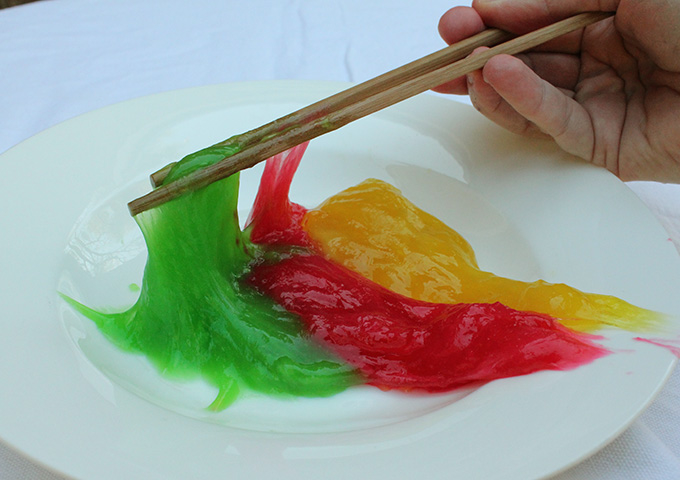
What you need:
- Small saucepan, spoon and stove top
- ¼ cup tapioca flour*
- ¼ cup cold tap water
- 1 tablespoon sugar
- 4 drops food colouring
- ¼ teaspoon citric acid (available in the baking aisle)
*Available at some supermarkets and Asian grocers. Corn-flour or potato starch can be substituted but the slime will not be as stretchy.
What to do:
- Place the ingredients in a small saucepan and stir to combine. OPTIONAL: Add citric acid for sour slime.
- Warm over a HIGH heat on the stove top, stirring until the mixture starts to thicken.
- Reduce the heat to LOW and stir the thickening slime until it is all transparent.
- Remove from the heat and leave to cool. The slime will be VERY HOT – to speed up cooling, fill the saucepan with cold water, pour off the water, and repeat a few times. If the slime becomes too sticky, rinse it under cold water.
Safety note:
Take care using the stove and handling the hot slime.
What’s happening?
Tapioca flour is made from cassava root (Manihot esculen-ta) and it contains a lot of starch (long chains of glucose molecules). When heated with water, starch absorbs water. The change from a milky liquid to a translucent gel is called ‘gelification’ and it occurs when the starch molecules change structure and bind to water molecules.
Gelification can be used in cooking to make jelly or to thicken sauces, but animals can use water to make slimy substances too.
The most extreme example of this is the eel-like hagfish which can make a thick slime in an instant to repel preda-tors. Chemicals from the hagfish mix with seawater to make a gooey mixture of mucus strands and long fibres.






